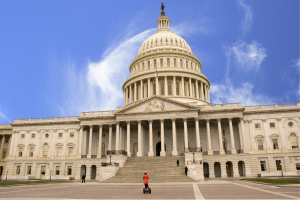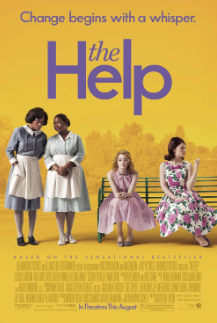One of the main concerns in schools nowadays is underage drug use and vaping. As time passes on, more and more students begin to experiment with and indulge in vaping and drugs. It is known that social media has a major influence on the youth — and this includes the many online influencers who promote this activity. In a study from the National Center of Addiction and Substance at Columbia University, 2,000 adolescents were questioned about their drug use and social media habits. 70% of these participants admitted to a frequent use of social media. Compared to the nonusers or infrequent users of social platforms, this percentage of adolescents was 5 times more likely to purchase cigarettes, 3 times more likely to drink alcohol, and 2 times more likely to use marijuana. Social media is not the enemy to be avoided at all costs, as many adults want children to believe. However, these platforms are to be navigated carefully in order to avoid negative influences. Although the daily use of cigarettes in youth has declined from 9.8% in 1991 to 0.6% in 2021, this is largely due to the graduation of teens and adolescents to E-cigarettes — or vapes. Cigarette usage in high school students was steadily decreasing until the early 2000s’ when electronic cigarettes hit the mainstream market. Popular brands of vapes were able to hook children on their products by making false promises of a “healthier alternative to traditional smoking” and receiving celebrity endorsements.
Another influence that’s common in youth is peer pressure from friends. The National Library of Medicine did a study on adolescents and peers’ influence in vaping. The studies showed how most respondents to the survey they created had used an electronic cigarette for the first time in the presence of friends. Statistics showed that the influence of friends was more evident in non-Hispanic whites, Hispanics/Latinos, those living in urban areas, those who live in high-income households, those with higher self esteem, and those with a higher urge to experiment with vaping. On the contrary, the victims of peer pressure often have lower self esteem and weaker backgrounds, making them easily persuaded targets for E-cigarette use. These findings help support the idea that peer pressure is one of the main influences for indulging in vaping especially.
Peer pressure is also commonly performed when it comes to drugs and substances. Studies narrowed down one mechanism of many which help promote substance abuse. Socialization which is the concept of being influenced by another friend’s substance use. When it comes to socialization, adolescents might feel more pressured to join in on substance abuse in fear of being “left out”. Adolescents may even be more influenced simply because they think it will be fun, especially if their friends are participating. Teens with mental health struggles may be more susceptible to peer pressure if promised a ¨quick escape¨ from reality.
As the mental health crisis continues to spread in schools across the country, it is no surprise that cases of substance abuse have increased along with it. Students actively fighting against mental health disorders, mainly anxiety and depression, report feeling hopeless and isolated. Desperate for connection, these students are more likely to surrender to peer pressure and experiment with drugs. In 2018, Frederick County Public Schools conducted an examination on the activity of LGBTQ+ students in the district. It was found that almost ⅔ of gay, lesbian, or bisexual students reported consistent feelings of sorrow and/or hopelessness. Additionally, this demographic of students were nearly 4 times more likely to report a serious consideration of suicide than heterosexual students that year. 42.3% of LGBTQ+ youth in Frederick County reported experimentation with marijuana; this is a stark contrast to the lower percentage of 29.6% heterosexual students who reported using the same substance. Purely looking at the statistics, this suggests a direct correlation between student mental health and drug experimentation.
Ultimately, the concept of peer pressure, the power of social media, and declining mental health have been major influences on adolescents, especially in school settings. If you or someone you know is currently battling addiction, then it is crucial to reach out to a trusted adult or contact 1-844-289-0879 — which is the 24/7 drug helpline for teens. This way, you or that person can receive proper assistance from specialists.
Addiction Center. www.addictioncenter.com/community/social-media-teen-drug-use/. Accessed 16 Nov. 2024.
Chaput-Langlois, Sophie, et al. “Friends, Attachment and Substance Use in Adolescence.” Journal of Applied Developmental Psychology, vol. 83, Nov. 2022, p. 101457, https://doi.org/10.1016/j.appdev.2022.101457. Accessed 16 Nov. 2024.
“Collection: Celebrity Endorsers.” Stanford Research into the Impact of Tobacco Advertising, tobacco.stanford.edu/ecigs/celebrity-vapor/celebrity-endorsers/. Accessed 16 Nov. 2024.
Groom, Allison, et al. “The Influence of Friends on Teen Vaping: A Mixed-Methods Approach.” Edited by Paul Tchounwou. National Library of Medicine, pmc.ncbi.nlm.nih.gov/articles/PMC8296881/. Accessed 16 Nov. 2024.
Mejia, Maria, et al. “Trends in Cigarette Smoking among United States Adolescents.” National Library of Medicine, pmc.ncbi.nlm.nih.gov/articles/PMC10741819/#:~:text=In%2011th%20graders%20. Accessed 16 Nov. 2024.
Ramachandran, Varsha. “Impact of Smoking/Vaping and Its Neuroscience Correlation.” Rising Researchers, risingresearchers.com/journal/peer-pressure-and-social-media-impact-of-smoking-vaping-and-its-neuroscience-correlation/#:~:text=Peer%20pressure%20is%20another%20significant,correlate%20with%20e%2Dcigarette%20use. Accessed 16 Nov. 2024.
Risk Behaviors and Sexual Identity Report. 2018, health.frederickcountymd.gov/DocumentCenter/View/6967/Frederick-County-HS-LGB-Summary-2018-42020. Accessed 16 Nov. 2024.






































